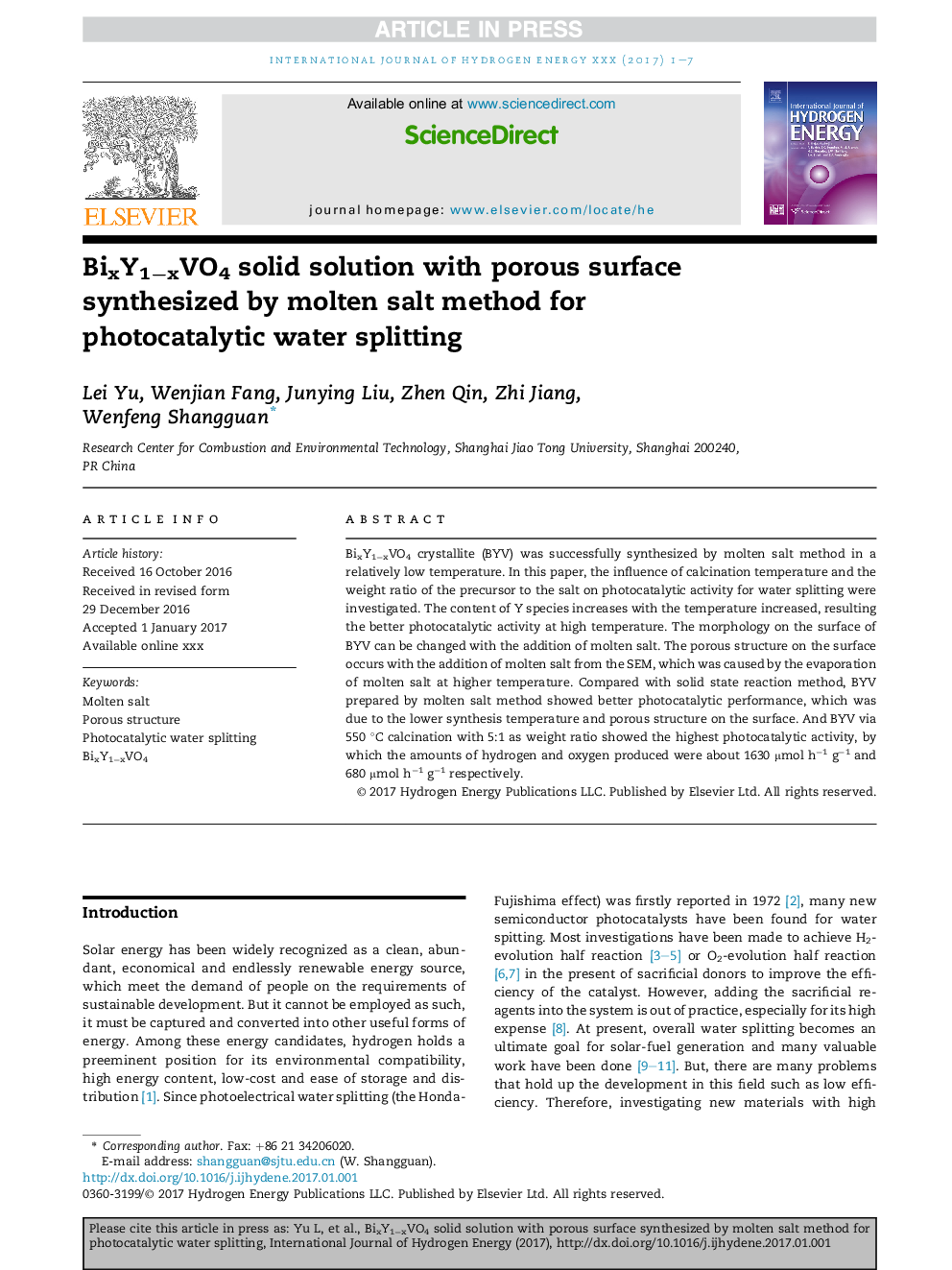| Article ID | Journal | Published Year | Pages | File Type |
|---|---|---|---|---|
| 5146093 | International Journal of Hydrogen Energy | 2017 | 7 Pages |
Abstract
BixY1âxVO4 crystallite (BYV) was successfully synthesized by molten salt method in a relatively low temperature. In this paper, the influence of calcination temperature and the weight ratio of the precursor to the salt on photocatalytic activity for water splitting were investigated. The content of Y species increases with the temperature increased, resulting the better photocatalytic activity at high temperature. The morphology on the surface of BYV can be changed with the addition of molten salt. The porous structure on the surface occurs with the addition of molten salt from the SEM, which was caused by the evaporation of molten salt at higher temperature. Compared with solid state reaction method, BYV prepared by molten salt method showed better photocatalytic performance, which was due to the lower synthesis temperature and porous structure on the surface. And BYV via 550 °C calcination with 5:1 as weight ratio showed the highest photocatalytic activity, by which the amounts of hydrogen and oxygen produced were about 1630 μmol hâ1 gâ1 and 680 μmol hâ1 gâ1 respectively.
Related Topics
Physical Sciences and Engineering
Chemistry
Electrochemistry
Authors
Lei Yu, Wenjian Fang, Junying Liu, Zhen Qin, Zhi Jiang, Wenfeng Shangguan,
